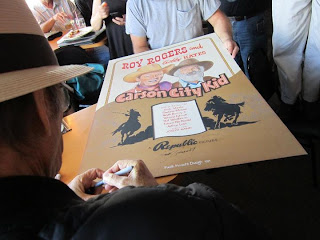I’m often asked if we have enough signs to fill the new home. My usual response is, “More than enough." What we still are searching for, however, are the smaller items which will accompany the signs on display.
We’re also greatly expanding the number of storefronts whose windows become our themed display cases. The
You can help.
If you know me, you know I am particularly fond of salesman samples. These are the items you may have in your back closets, under your work benches or maybe on some forgotten back wall that once served as a sales room. They can be free-standing or wall-mounted, in a display case or loose in your bottom drawer. Whatever form they might take, we’re looking for such donations.
We recently acquired two such salesman’s samples. One was gift of the museum’s go-to
expert on vintage point-of-purchase signs—Dave Greene of Cincinnati
 When he saw the woodgrained porcelain enamel sample (see photo), he snatched it up right away, saying, “This one’s for
the museum.” When I walked into the show that
Saturday morning, he walked up and presented it to
me. “Thought you’d like this,” he
said. Indeed, I do, and it’ll find a
prominent place in our porcelain enamel area.
When he saw the woodgrained porcelain enamel sample (see photo), he snatched it up right away, saying, “This one’s for
the museum.” When I walked into the show that
Saturday morning, he walked up and presented it to
me. “Thought you’d like this,” he
said. Indeed, I do, and it’ll find a
prominent place in our porcelain enamel area.
He wasn’t finished. He next pulled out an original Zippo lighter box. “Here, I found this, too. It’ll look good in the museum as well.” In the palm of his hand was a Neon Products engraved lighter with the copy, “30th anniversary.” Very cool.
 The other new salesman sample acquisition was purchased from
Wayne Woodrum of
The other new salesman sample acquisition was purchased from
Wayne Woodrum of We’re always looking for more salesman samples—whether they’re from sign product manufacturers or custom-made samples from sign companies. Ad specialty items such as lighters, yardsticks, paperweights, match packs, pens, etc. are also wanted.
Remember, it's the little things.
So before you toss it out, call Tod at the American Sign Museum





























